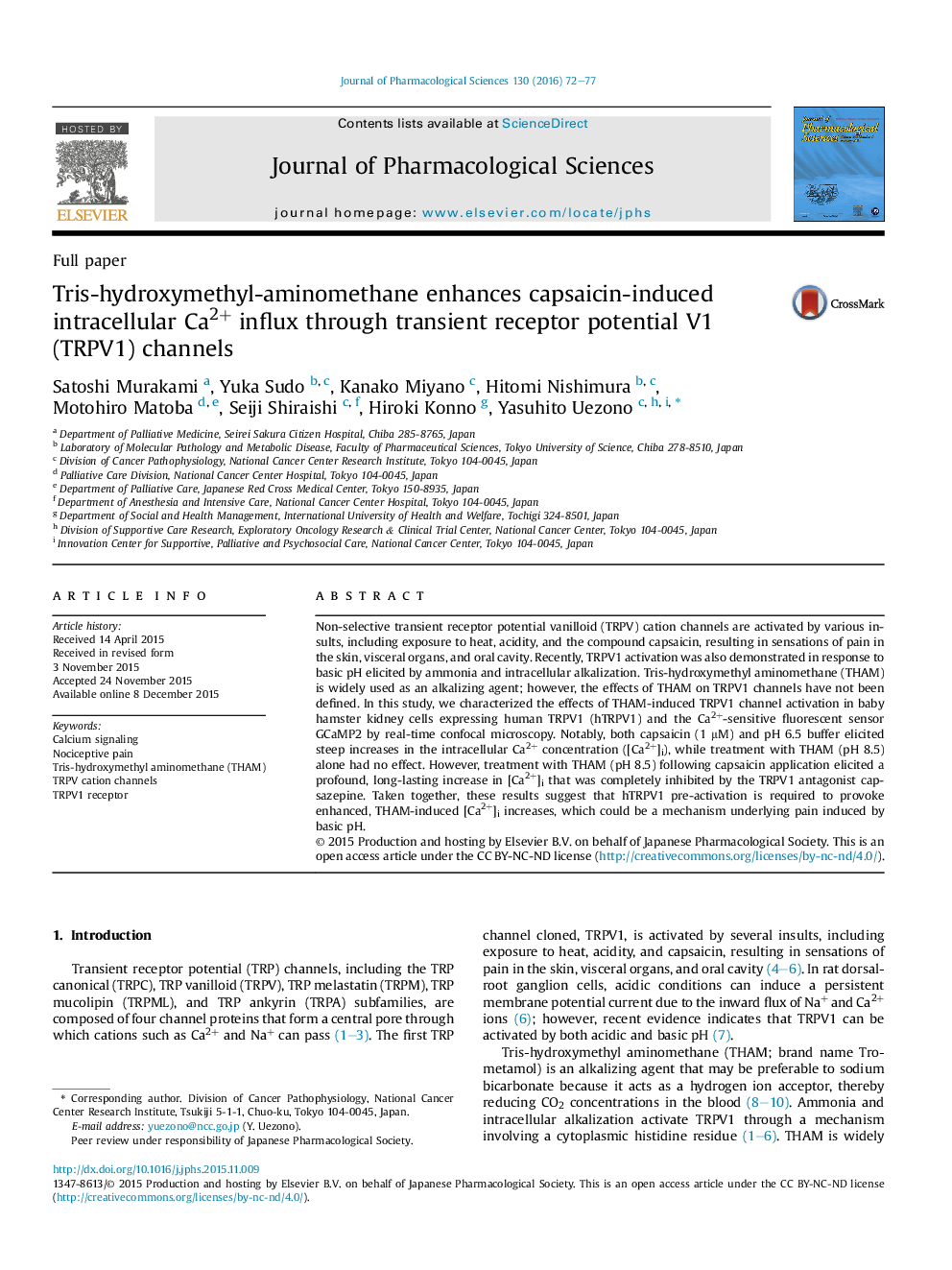| Article ID | Journal | Published Year | Pages | File Type |
|---|---|---|---|---|
| 2548773 | Journal of Pharmacological Sciences | 2016 | 6 Pages |
Non-selective transient receptor potential vanilloid (TRPV) cation channels are activated by various insults, including exposure to heat, acidity, and the compound capsaicin, resulting in sensations of pain in the skin, visceral organs, and oral cavity. Recently, TRPV1 activation was also demonstrated in response to basic pH elicited by ammonia and intracellular alkalization. Tris-hydroxymethyl aminomethane (THAM) is widely used as an alkalizing agent; however, the effects of THAM on TRPV1 channels have not been defined. In this study, we characterized the effects of THAM-induced TRPV1 channel activation in baby hamster kidney cells expressing human TRPV1 (hTRPV1) and the Ca2+-sensitive fluorescent sensor GCaMP2 by real-time confocal microscopy. Notably, both capsaicin (1 μM) and pH 6.5 buffer elicited steep increases in the intracellular Ca2+ concentration ([Ca2+]i), while treatment with THAM (pH 8.5) alone had no effect. However, treatment with THAM (pH 8.5) following capsaicin application elicited a profound, long-lasting increase in [Ca2+]i that was completely inhibited by the TRPV1 antagonist capsazepine. Taken together, these results suggest that hTRPV1 pre-activation is required to provoke enhanced, THAM-induced [Ca2+]i increases, which could be a mechanism underlying pain induced by basic pH.
